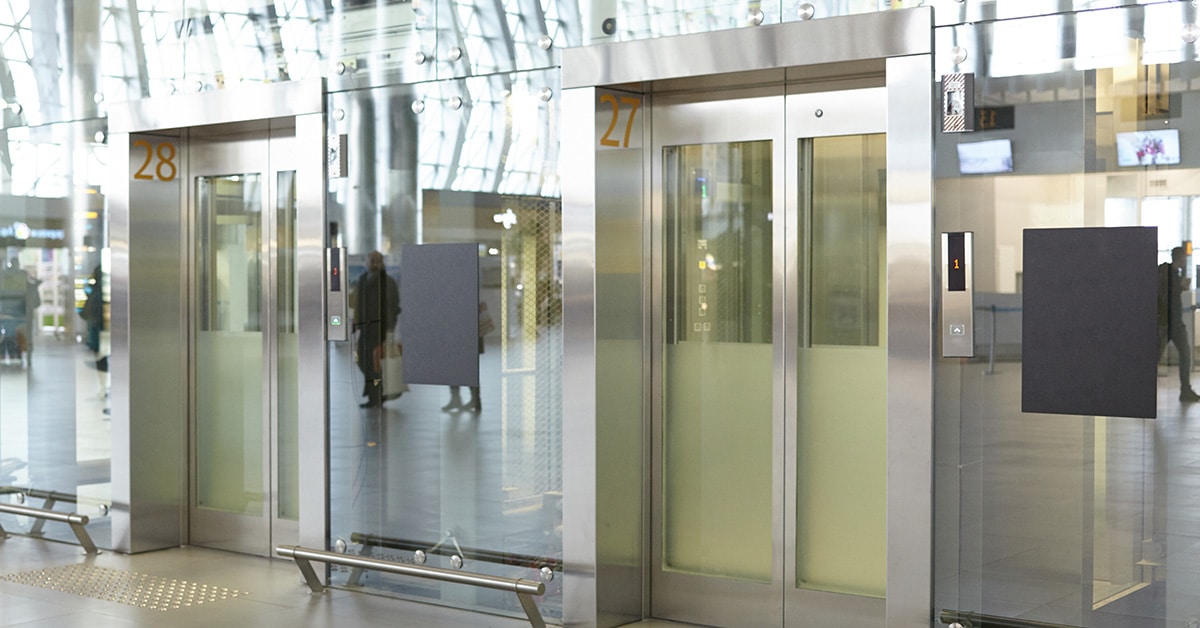Recently, one of our own was in the right place at the right time during an emergency. Keith Gaut, our Mobile, AL Field Supervisor, recently took a trip, and while at the airport, a child became trapped inside the airport elevator. Keith was able to quickly and safely extract the child. Here is the story in his words:
“I was walking through an airport with my wife recently and noticed a number of people congregating around an elevator landing. Amongst them were numerous police and even military personnel. It turns out a child was entrapped in the elevator, and the exterior(“hatch”) doors were open, but the car door was closed(and locked). Given the child’s distress, they were preparing to essentially break the car doors such that the child could be extracted. I offered my assistance and was able to promptly open the car doors such that the child could be extracted from the elevator.”
The point of this is not to point out the fine qualities of our Field Supervisor. Rather, it is to point out how even a large group of capable people had no idea how to extract somebody from an elevator. Therefore, having somebody around who is competent in terms of extracting people from an elevator can be quite valuable. The family seemed quite pleased that their child was no longer on that elevator. I am sure the airport was thankful, too. Both for a visitor being safe and for not having to purchase a substantial amount of repairs.
It is well established that emergency evacuation of passengers is best performed by trained elevator personnel. Their experience and training prove invaluable in these situations. However, there are some cases when you may not be able to wait. Moreover, there is training available for the safe extraction of persons in emergency situations.
As a building owner, you should ask yourself if, at any time, could there be a situation where you might have to remove passengers from a stalled elevator? Perhaps your building is in a rural area, and the help of your elevator technician might be several hours away. Maybe you operate a hospital or critical care facility with elevators used for patients to be transported between floors. You could have an elevator in a plant on an industrial site that might have other emergency concerns, such as atmospheric, chemical, or weather-related issues making quick rescue imperative. If you think you might be in one of these situations or you simply want to be better equipped to handle an emergency, there is some training that is needed.
What is required of this training is set forth in ASME A17.4. This guide was put together by the American Society of Mechanical Engineers with direct input from the elevator industry. This guide provides the who, what, and where of emergency evacuation procedures. This is the best guide for Emergency personnel, First Responders, building maintenance supervisors, and anyone in a position of authority in a building that has elevators.
Elevators are complicated mechanically driven systems that are designed on a “fail-safe” imperative. In the event the elevator encounters a fault, be it loss of power, communication, or the appearance of a hazard, the system is designed to keep passengers from being exposed to the hoistway. Functionally, this means that the passengers will have to be extracted by a competent person. However, if you are in one of these time-sensitive situations described above, that competent person may need to be yourself.
So, we recommend that all persons with such unique needs look into the necessary elevator safety and emergency evacuation training.
This training is available from several sources, and we recommend the following:
ESTS, Elevator Safety, and Technical Services
866-899-ESTS toll-free, or their website is:

